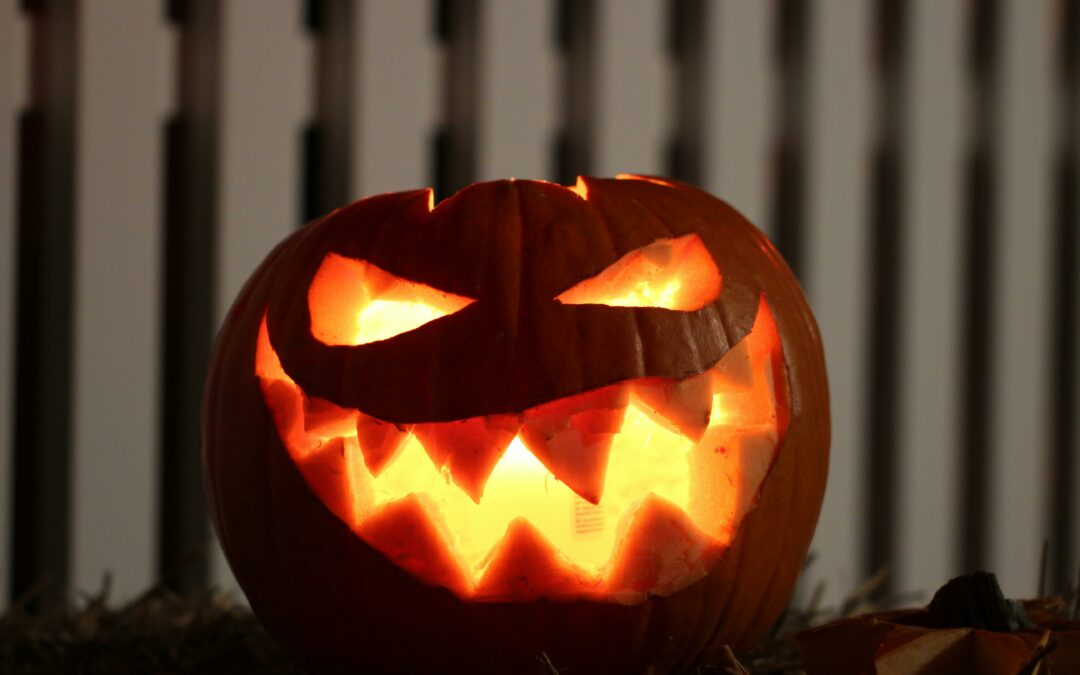Alvin Boyd Kuhn best described the esoteric aspects of Halloween in his book: “Halloween: a festival of lost meanings”. He adds another symbolic and spiritual dimension to this holiday.
Indeed, well beyond folklore and traditions, each pagan holiday is linked to celestial cycles and can provide metaphysical teachings on the incarnation of the soul and its destiny.
First of all, the time of Halloween: October 31 corresponds to 40 days after the autumn equinox. This takes us back to astrotheology and one of the 4 major celestial events of the year: the 2 solstices and the 2 equinoxes: Because the solstices and equinoxes in this context become a celestial metaphor for human incarnation and spiritual evolution, because daylight was compared to divine light and night to matter. The balance and the variations in the length of days and nights symbolized the dance between light and darkness, spirituality and materiality, Spirit and matter.
Spring Equinox: Days become longer than nights. Light dominates darkness (The spiritual being born)
Summer Solstice: The longest day of the year = light at its zenith. Spirit at its peak (The spiritual being realized)
Autumn Equinox: Nights become longer than days. Darkness takes precedence over light (The material being born)
Winter Solstice: The longest night of the year = darkness at its zenith. Matter at the top (The finalized material being)
To summarize:
From the spring equinox to the autumn equinox:
the days are longer than the nights
The Spirit dominates matter
These are the higher worlds
___________________________________________________
From the autumn equinox to the spring equinox:
the nights are longer than the days
Matter overwhelms the Spirit
These are the lower worlds
40 days after the autumn equinox: this refers us to a maturation to embody something new in matter: 4 represents matter, the stability of the tangible. 40 to a time of maturation, a cycle of transformation.
So Halloween, according to Alvin Boyd Kuhn, represents the incarnation of the soul in the physical body. This Halloween emphasis on the “animal stage,” the more violent, frightening aspects, and then the soul’s journey toward divine perfection echoes themes of role reversal and transgression also found in another celebration: Saturnalia. Just as Saturnalia disrupted social norms, allowing the “lower” elements of society to briefly reign, Halloween, according to Kuhn, represents a symbolic descent into the primitive and instinctive aspects of human nature. The untamed soul, still bound by its physical limitations, seeks to free itself through the revelry and symbolic acts of Halloween.
This common focus on a temporary adherence to the “lower self,” or less civilized, further strengthens the connection between these seemingly disparate holidays, suggesting a universal human desire to explore the boundaries of identity and social order.
The divine light embodied in matter is represented by the Jack-o’-lantern, the light in the pumpkin. This divine light incarnated in a hideous body, in view of the perfection of the higher worlds, reveals the contrast between the divine luminous perfection and the bestial material world. Although enclosed in a beast prey to its lower aspects, the light of the soul still shines.
Animal masks, frightening representations portray the deformation and disfigurement of the soul through the eyes and the material body. Halloween masks are made to reveal the disfigurements of the beauty of the divine, whose perfect nature becomes darkened and corrupted by the animal body, through which it is incarnated and becomes a concrete manifestation.
There is therefore a duality between the spiritual and material nature of the human being, between Spirit and matter. The human being is the result of the union between an immaterial soul and a gross body. Halloween represents this duality, and reminds us that behind the violent masks and those guided by lower instincts, there is hidden the divine light, perfect and eternal.

